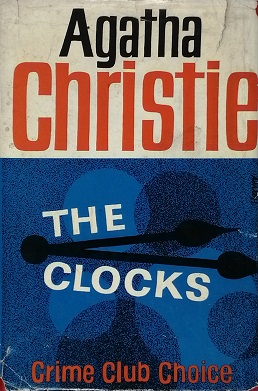I bought The Children’s Bach (1984) by Helen Garner in Oxford’s newest bookshop, Caper, a while ago. I might have mentioned the shop before. From the outside, it looks like a children’s bookshop – all joyful colours and suchlike – and it is, indeed, a children’s specialist. But there is a sizeable section at the back for adult books, all arranged together under headings like ‘the mundane everyday’ and ‘incredible journeys’. It’s a fun idea that invites serendipitous finds. When I came across the W&N Essentials reprint of The Children’s Bach, I couldn’t resist. This cover is so beautiful – one of my favourites of recent years.

I’ve been listening to a lot of Garner’s non-fiction in the past couple of years, but I did start my reading journey with her about 15 years ago with The Spare Room. My return to her fiction – only my second novel by her – reminds me of how taughtly she tells stories of disrupted domesticity.
In The Children’s Bach, Dexter and Elizabeth meet after years apart. They were at university together but drifted apart – yet, when they reunite, they almost unquestioningly bring their attendant worlds together. Dexter and his wife have two young children, Arthur and Billy (whose unspecific disability is dealt with in a way that felt quite shocking, and probably wouldn’t be done now). Elizabeth is dating an untamed musician, Philip, and he has a daughter, Poppy. Elizabeth’s closest relationship is with her much younger sister, Vicki, who is still on the cusp of adulthood while Elizabeth is heading into middle-age. The coming together of these families ultimately brings about a crisis.
A synopsis of Garner’s book is one thing. The reading experience is quite another. Garner has cut away at the plot until what is left is really an impression of a plot. There is an excellent scene where each line of dialogue and narrative is clearly a moment from an extended evening – it is the most filmic scene I’ve ever read; the most clearly like a film montage. It’s extremely effective. Writ on a larger scale, that is what the whole of The Children’s Bach does. You won’t find lengthy examinations of motivations and emotions – rather, Garner gives us stark glimpses into these people’s lives. That means that the choices people make play out almost before you realise they’ve made them.
And then, on the other hand, Garner gives some scenes unexpected breathing room. As David Nicholls highlights in his enjoyable introduction: ‘Major confrontations are overheard but never described, while smaller incidental scenes – a cello lesson, a conversation in a playground with a strange scabby boy, the experience of getting locked in a cemetery – expand.’
But the main star of The Children’s Bach is Garner’s writing. The unwavering, merciless observation she brings to her non-fiction is less intimidating in fiction, but no less present. She is exceptionally good on small domestic moments – and, much harder, equally good on the occasional abstract or nebulous moments. Here’s something which combines most – the recognisable ‘braced for more sobbing’ leading into a lovely dream scene.
Dexter lay rigid as a board, braced for more sobbing, but Athena slept, and dreamed that she was in a garden, on a large, flat, well-kept lawn, where yellow leaves off poplars lay about in drifts. As she watched they began to rise off the grass and play in the air in orderly streams as if being squirted from a hose: they rose and fell and rose again, in a variety of patterns, and everything was beautiful and enchanting and as it should be.
Threaded throughout the novel is music. The soundtrack – of Bach, of Philip’s grungier music – is never used heavy-handedly, but at the same time gives us insight and a rhythm to the story.
Athena understood why people gave up playing an instrument. She knew she did not play well, that her playing, even when correct, was like someone reciting a lesson in an obedient voice, without inflection or emotion, without understanding: a betrayal of music. She took her hands off the keyboard. There was dust on all the keys except those an octave either side of middle C. She closed the lid.
The only drawback I found with The Children’s Bach is how unknowable the characters are. Or is that a drawback, or simply a choice? Garner’s impressionistic writing is stunning to read, and every paragraph has the weight and confidence of a poem. I often stopped and reread sentences simply because they were so beautiful with such well-judged balance to them. But I don’t think I could describe the characters. Philip and Vicki are the exceptions to that rule, but the others felt like ciphers – or perhaps like containers for Garner’s beautiful observations and discrete moments. Is it deliberate, or a casualty of the novel’s sparseness?
Some critic apparently said The Children’s Bach was one of only four perfect short novels in the English language, which is the sort of silly thing that critics say when they want to get noticed. I can think of many short novels that I think are probably better, though perhaps not many that are as delicately and deftly done. With stronger depths to her characters, it would be a masterpiece. And perhaps those depths would come with rereading – my main takeaway from the experience is that I’m keen to reread, and perhaps find still more than I did this time. While googling for reviews, I discovered that Whispering Gums did exactly that.
So, how to conclude? I think there’s a strong chance that this is a brilliant novel, and it’s certainly a brilliant piece of writing. And perhaps it couldn’t have been such a beautiful reading experience if it had been more grounded. Or perhaps it would feel more grounded the second time around? Well, why not find out for yourself?








